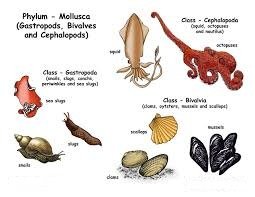Animals are eukaryotic, multi cellular, phyla belonging to the Animal Kingdom. Each animal has its own unique characteristics. They obtain their energy by consuming food from plants or other animals. Millions of species have been identified; very few species have similar characteristics, while others vary widely.
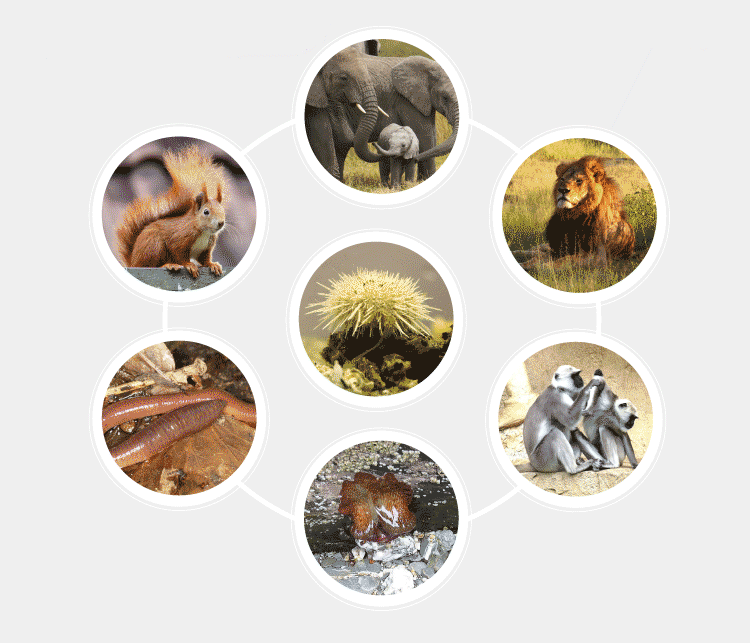
Classification of the animal kingdom
Animals are classified based on their characteristics. They are distinguished from algae, plants, and fungi by the absence of rigid cell walls. Some animals are also heterotrophic; in general, they digest their food within internal cells, which again distinguishes them from algae and plants. Another distinguishing characteristic of these species is that they are motile, without specific life stages.
Protozoa
Protozoa are a diverse group of eukaryotic organisms that are unicellular and have some animal-like characteristics such as mobility and prey. Protozoa obtain food by the process of osmotrophy, i.e., they absorb nutrients through the cell membrane, or they can also use phagocytosis. Eats, either by swallowing food particles with the help of pseudopodia.
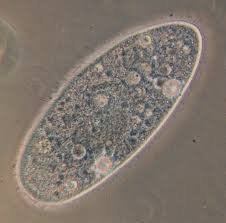
Bryozoan
Bryozoans are commonly recognized as algae. They are filter feeders that use a crown of ciliated tentacles to filter food particles from the water, and most live in freshwater, some in glacial waters, and some in ocean trenches. Most are colonial and have a single species. Zooids are distinct and not completely independent species within bryozoans. All colonies contain autozooids, which are responsible for feeding and defecation.
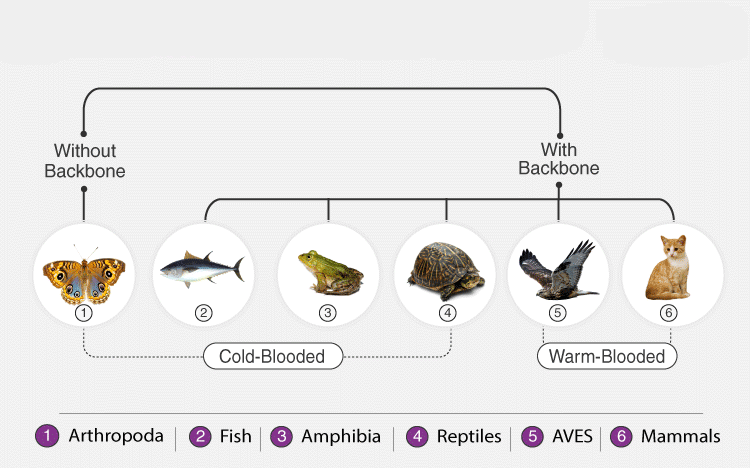
Vertebrates
Vertebrates are animals with backbones. Some include jawed vertebrates and jawless fish. Examples include sharks, ray fish, and bony fish. A clade called bony fish includes amphibians, reptiles, mammals, and birds. Extant vertebrates come in a variety of sizes, including the frog species Paedophryne amanuensis.
From the blue whale to the amphibians. Amphibians live on land and go into water to breed. Reptiles are covered with scutes. Mammals are terrestrial, aquatic, or aerial. Birds are covered with feathers and have wings.
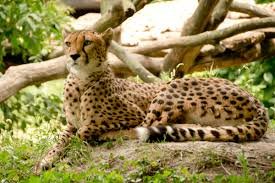
Level of organ formation: Animal tissues with similar capabilities are classified into shaped organs. Each organ is specific for a particular capability. For example: Platyhelminthes.
Tissue Formation Level: Animal cells exhibit division of labor among themselves. Cells that perform the same function cooperate to form tissues.
Level of Organ Structure Formation: Level of organ structure organization is exhibited in organisms where organs determine the shape of functional structures and each structure has a distinct physiological capacity.
Cellular organization level: This organization includes animals with cells that are formed as clumps of free cells.
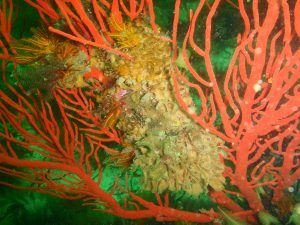
Type of organ system
Circulatory System: There are two types of circulatory structures – open type and closed type.
Open type: In this type of circulatory system, blood is pumped from the heart. For example, mollusks and arthropods.
Closed type: In this type of circulatory system, blood flows through various types of vessels, including capillaries, arteries, and veins.
Digestive system: There are 2 types of digestive system. Complete and incomplete digestive system.
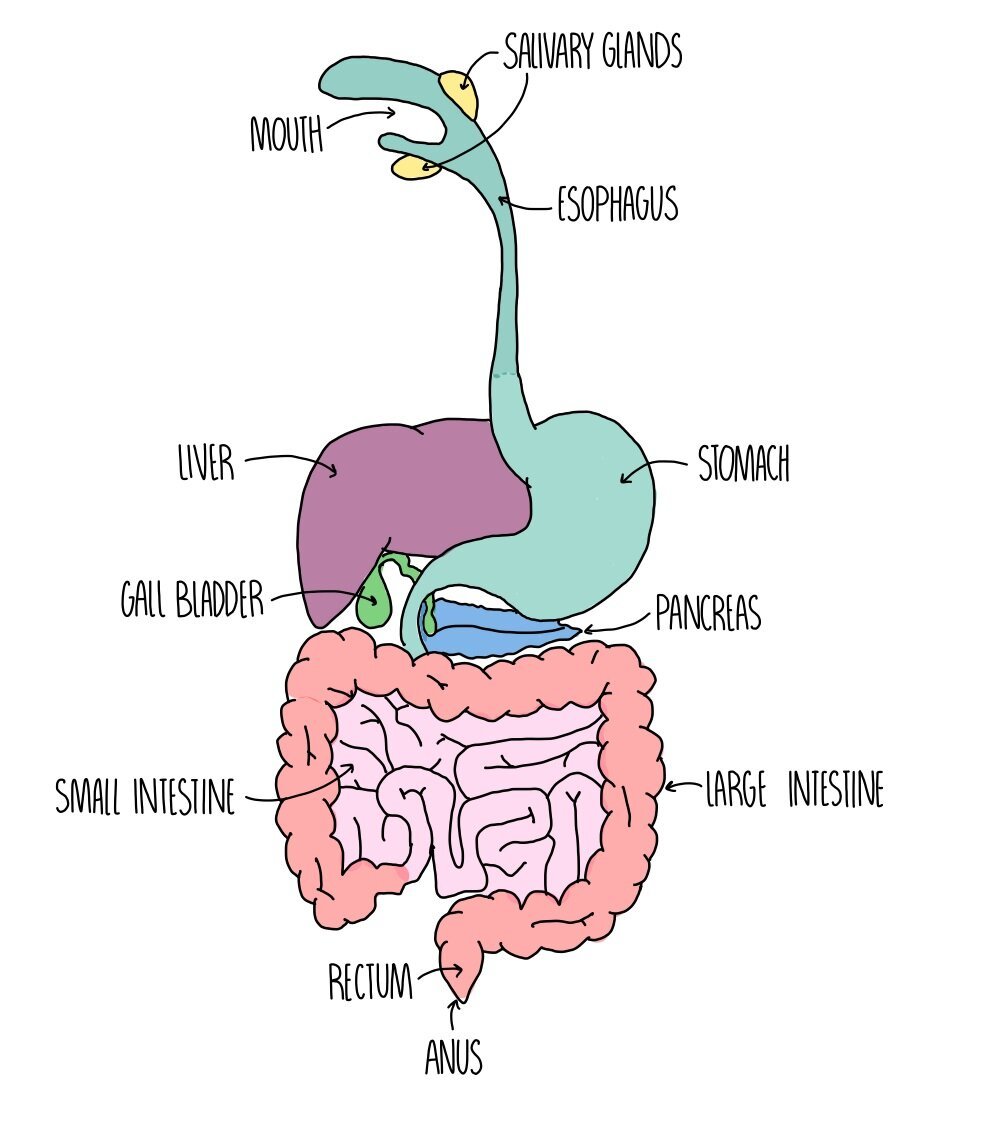
Complete digestive system: This type of digestive system has 2 openings to the outside of the body, a posterior end and a mouth. For example: chordates and arthropods.
Incomplete digestive system: It consists of a single opening to the outside of the body which functions as both the hind end and the mouth. For example: Platyhelminthes.
Body symmetry: There are 3 types of symmetry. Bilateral, Radial and Asymmetrical.
Bilateral Symmetry: Animals, where a body cannot be divided into left and right halves, are known to be bilaterally symmetrical.
Radial symmetry: Animals tend to exhibit spiral symmetry. Examples include coelenterates, echinoderms, and ctenophores.
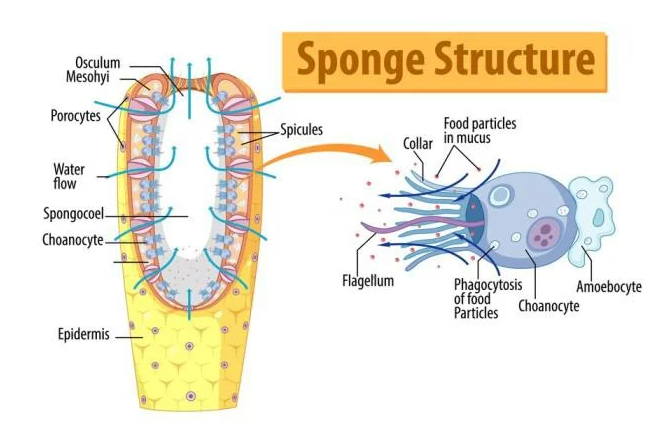
Asymmetry: Asymmetry is the complete absence of symmetry. That is, some organisms cannot be divided into two equal parts along a plane passing through the center of the organism. For example, sponges.
Most animals are also dioeciously and reproduce sexually through the formation of gametes. The major phyla that make up the animal kingdom and the characteristics that distinguish them from each other are given below.
Phylum Porifera
- Sponges, a multi cellular, primitive animal with cellular grade organization, are Examples of the phylum are Porifera. They grow mostly in marine ecosystems and are characterized by a body wall made up of two loosely arranged layers of cells with a mesenchyme between them. Inside the body wall, there is a large cavity (spongocoel), mostly containing several small canals to supply oxygen and food and to eliminate toxic waste products.
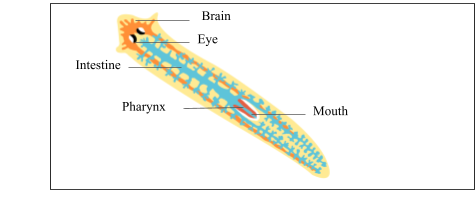
Example: Spongilla (freshwater sponge
Phylum Cnidaria
- Members of the phylum Cnidaria, the coelenterates, are radially symmetrical and possess a tissue-level organization (their tissues do not form organs).
- Usually, when both forms are found in the same organism, they alternate periodically during the life cycle, which is called alternation of generations.
Examples: Adamsia (sea anemone), Mandrina (brain coral)
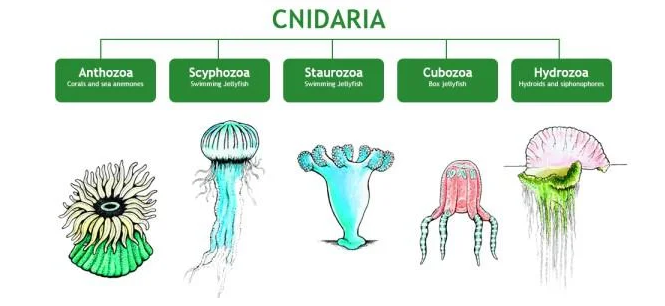
Phylum Platyhelminthes
Members of the phylum Platyhelminthes are bilaterally symmetrical animals with a layered organization of limbs.
- Animals lack an anus but have a mouth.
- The mode of reproduction is internal.
Since the animals are amphibious in nature, Extensive precautions are taken to ensure a minimum incidence of self -fertilization.
Example: Fasciola (liver fluke)
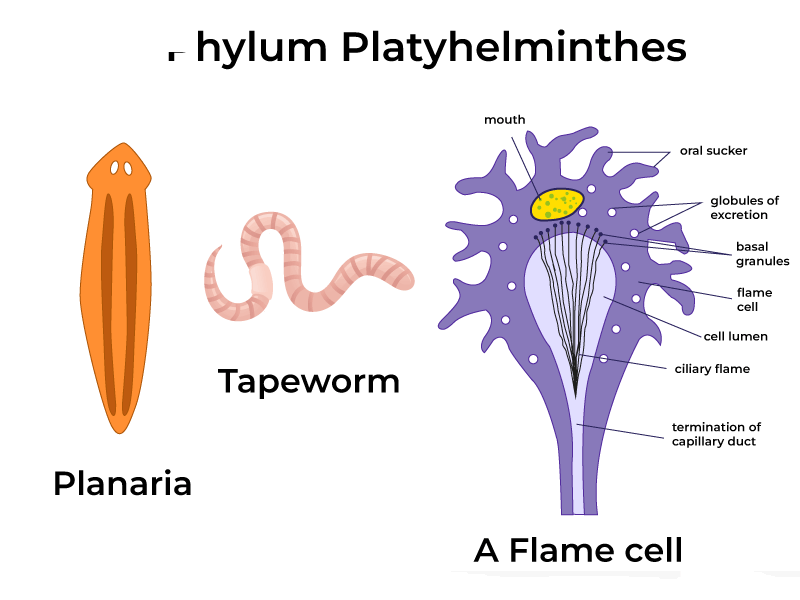
Phylum Ashelminthes
- These are also triploblastic organisms that have a pseudocoelom between the gut and the body wall.
- The cavity is not lined by mesodermal epithelium, and therefore, despite the presence, members of Ashelminthes are classified as pseudocoelomates or organisms lacking a true body cavity among the various members of the phylum, nematodes are the most important.
- They can live in both aquatic and terrestrial environments and are parasitic in nature.
Example: Wucheraria bancrofti (filarial worm)
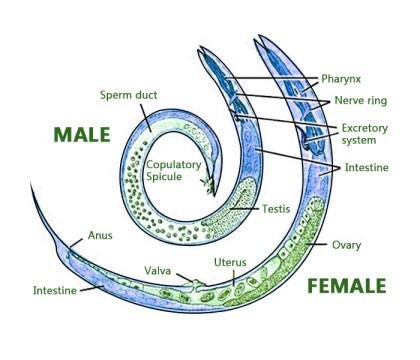
Phylum Annelida
- Members of the phylum Annelida are triploblastic, meaning they develop from three germ layers of organization, and have bilaterally symmetrical bodies. They also have a true coelom, or body cavity, lined by a layer of mesodermal epithelium.
- The body is elongated, flattened, or cylindrical, and ring-like grooves, called annuli (from which the phylum name comes), divide the body into segments.
- Animals in this phylum also have a true closed blood circulation.
Examples: Hirudinaria (leeches), Pheretima (earthworms)
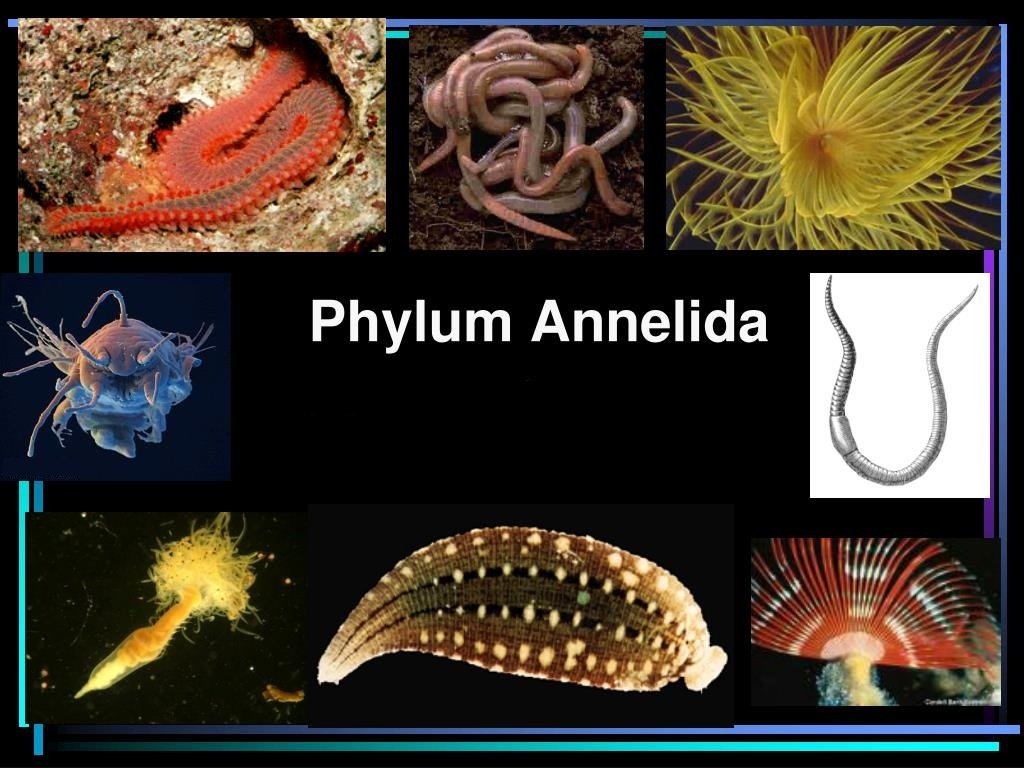
Phylum Arthropoda
- As the largest phylum in the animal kingdom, arthropods exhibit a bilaterally symmetrical, triploblastic body with a level of organ organization. They also have a true body cavity or coelom (coelomates).
- They have an open circulatory system, which is connected to a body cavity called the hemocoel. Respiratory and excretory organs vary from organism to organism.
Examples: Apis (bees), Periplanata (cockroaches)
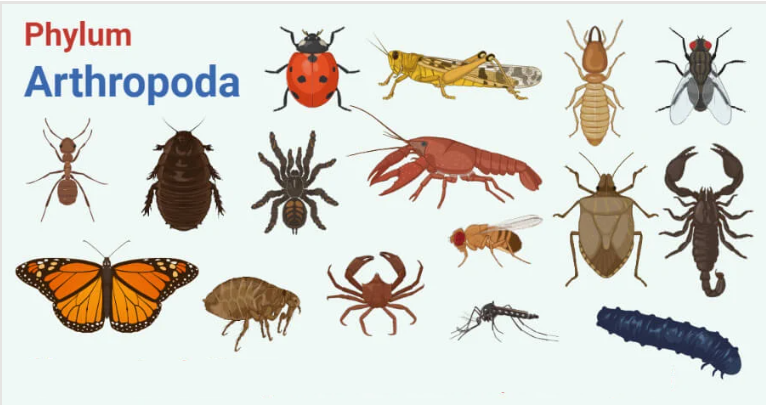
Phylum Mollusca
- The second largest phylum of the animal kingdom, Mollusca includes common aquatic animals such as snails, slugs, octopuses, mussels, etc.
- The nephridium serves as an excretory organ for the removal of waste products from the body. Except for cephalopods,
all other molluscs have open circulation.
Examples: Pila (apple snail), Dentalium (tooth shell)
